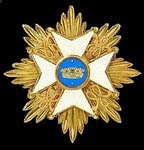First raised 1756 as the Volontaires de Nassau-Saarbruck and 2 squadrons strong. In April 1758 it was renamed Volontaires Royaux de Nassau and then in June that year became the Royal Nassau Regiment and ranked 56th in the cavalry (but becoming 55th in 1760, 38th in 1761 and 34th in 1762). Then it was 600 strong made up of 4 squadrons. It was recruited in Strasbourg and principally in the area of Landau, in the Palatinate, on the frontiers of the Sarre and in the County of Saarwarden. The colonel was the Prince of Nassau-Saarbruck.
The regiment seems to have had a lively war; as Kronoskaf gives a detailed account there is no point in my repeating it here. I have no independent account of my own so I recommend that anyone wishing to know the regiment's exploits in detail should look there: https://www.kronoskaf.com/syw/index.php?title=Royal-Nassau_Hussards
This image of the uniform is from the New York Public Library website https://digitalcollections.nypl.org/items/510d47e4-3e47-a3d9-e040-e00a18064a99:






















